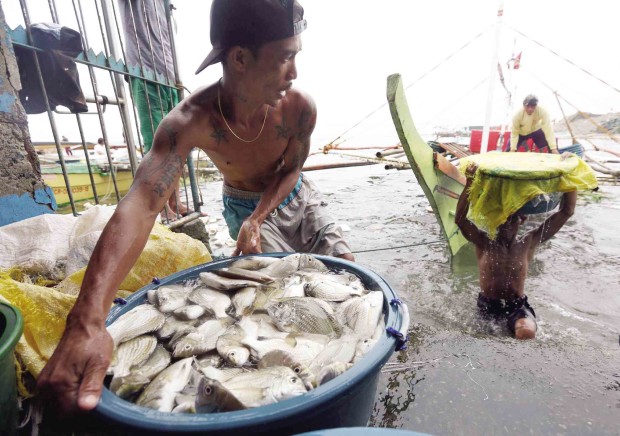Scientists push creation of fisheries department

BOUNTY FROM THE SEA Local scientists are proposing the creation of a new Department of Fisheries and Aquatic Resources to safeguard the country’s marine resources in order to feed a growing population. —MARIANNE BERMUDEZ
BAGUIO CITY—The country’s scientists discussed here the creation of a Department of Fisheries and Aquatic Resources (DFAR), now that issues on marine territorial disputes and sovereign rights over Benham Rise have redirected attention to the underdeveloped fishing sector.
Dr. Rafael Guerrero III, known for his tilapia sex reversal technology, advocated for a DFAR during the 39th Luzon regional scientific meeting of the National Academy of Science and Technology (NAST) here last week, saying the body regulating fishing remains the least budgeted agency under the Department of Agriculture (DA).
The economic potentials of Benham Rise—an oceanic plateau that spans 13 million hectares—have encouraged the creation of a department dedicated to fishing, Guerrero said.
But the proposal drew mixed reactions.
Science and Technology Secretary Fortunato dela Peña suggested asking Congress instead to act on a measure creating a fisheries modernization law.
Article continues after this advertisementHe said it was too early to rely on Benham Rise, which was explored only recently and which the government has not yet been able to measure the extent of its resources.
Article continues after this advertisementExperts like Central Luzon State University president, Tereso Abella, said a DFAR would improve the lot of fishermen. But others brought up the issues of additional bureaucracy and budget required in building a new department.
This year’s Luzon scientific meeting was focused on fisheries and aquatic resources, which Dela Peña described as the country’s “blue economy.”
“Let the seas pay for all our debts,” Guerrero said, adding that the oceans produce food for 2.6 billion people.
Citing NAST committee reports, he said the proposed DFAR would ensure sustainable fisheries management of the country’s 26.6 million ha of coastal waters, 193.4 million ha of oceanic waters and 800,000 ha of inland waters.
Marine products are “the cheapest sources of high quality protein and are our comparative advantage with potential for value-added export products,” he said.
He said more than half of 2 million Filipinos, who rely on fishing for a living, are classified as the “poorest of the poor.”
The DA oversees the Bureau of Fisheries and Aquatic Resources which received 13.8 percent of the agency’s 2016 allocation of P48 billion, “although fisheries contributed 19 percent to the total agricultural output,” Guerrero said.
He said the DA’s primary focus has been rice self-sufficiency and should no longer be distracted by fishery regulation should Congress pass the measure that seeks to create the DFAR. —VINCENT CABREZA